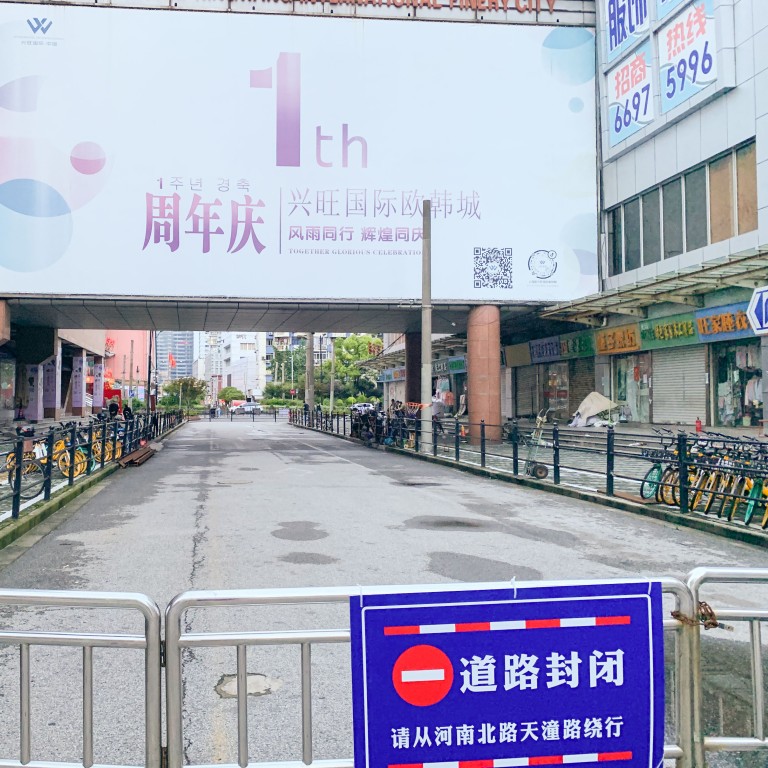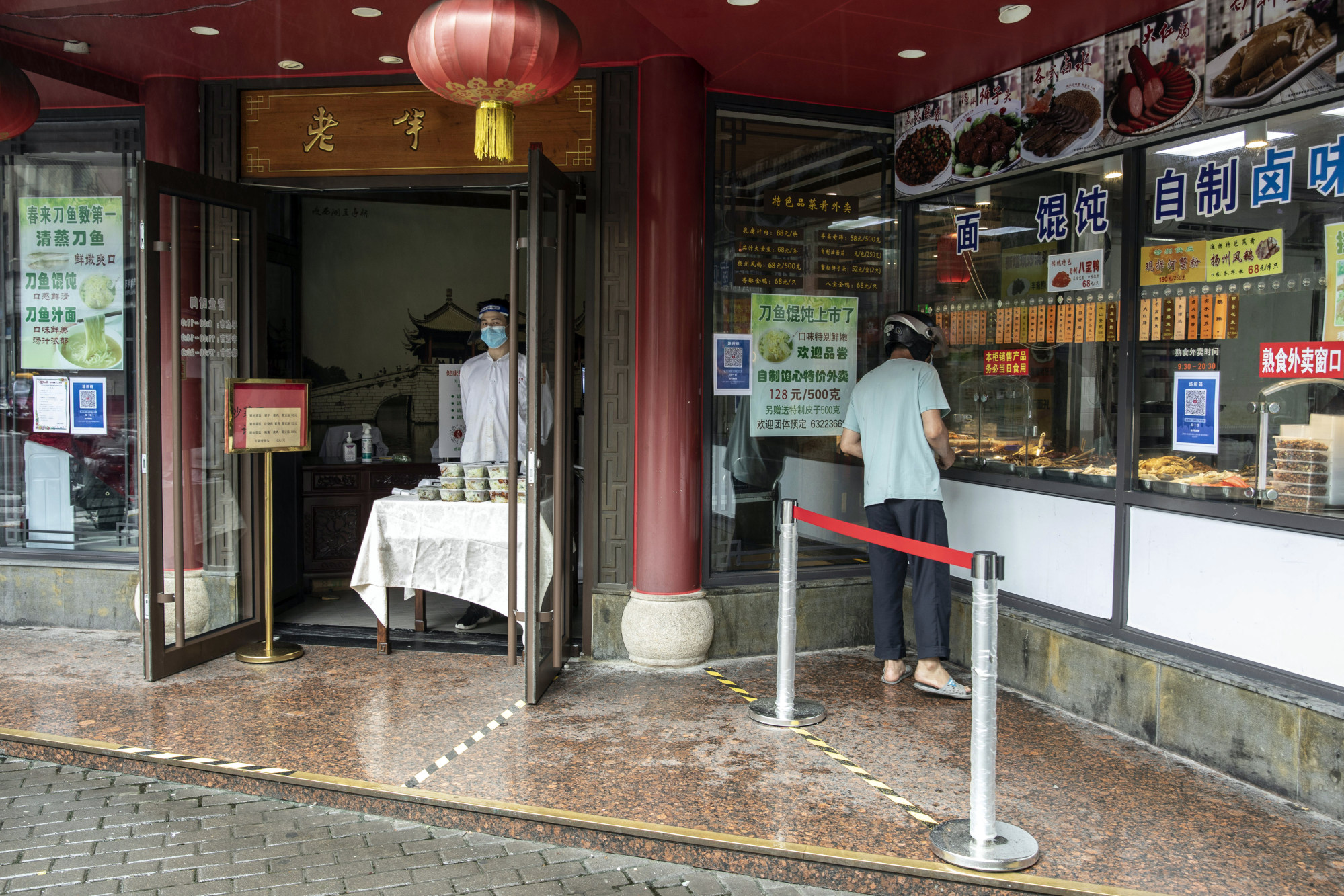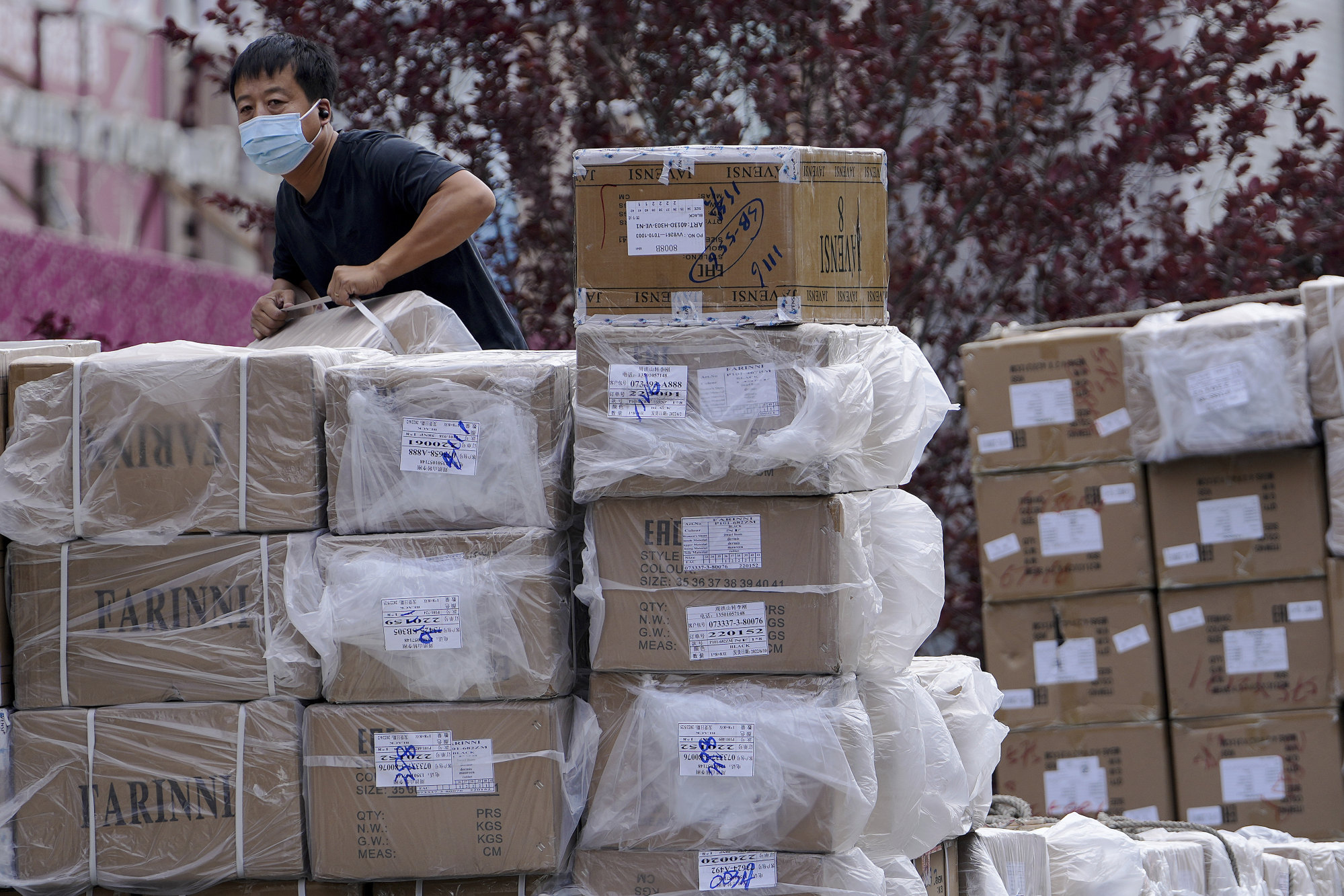
Shanghai reopening: half-open restaurants and retail stores mar city’s pledge to return to 100 per cent normality by June 30
- A total of 47 community infections were found since June 1, forcing 40 residential compounds to be reclassified as “medium-risk” zones
- That confined more than 100,000 residents to their homes for 14 days, with even close contacts being subjected to two-day lockdowns
Many of Shanghai’s restaurants and retail stores remain closed amid sporadic lockdowns to deal with a Covid-19 outbreak that refuses to abate, marring authorities’ vows to return China’s commercial hub to full normalcy by June 30.
A total of 47 community infections were found across the city of 25 million residents in the two weeks since June 1, when a two-month citywide lockdown formally ended.
That caused 40 housing compounds to be reclassified as “medium risk” zones, forcing more than 100,000 residents to be confined to their homes for 14 days. Even close contacts of infected residents had to be subjected to two-day lockdowns.
That has crimped the daily receipt at the Suiyi Restaunat in the Pudong district to 3,000 yuan (US$447) this week, merely one-third of the average takings in March before authorities locked the entire city down to keep the Covid-19 disease at bay.

“The biggest [problem] is there is no clear-cut time frame given” for the entire city to completely reopen, said the eatery’s owner Wang Xuliang. “Dining in is still barred because a community infection was spotted in our subdistrict last week, [so] local officials are unlikely to lift the restrictions any time soon.”
Half-opened restaurants, shopping centres and entertainment venues are spoiling the facade of normalcy that Shanghai’s authorities are trying to project to buttress their argument that their dogged pursuit of the zero-Covid policy was a tentative success at containing the Omicron’s spread.
Shanghai lockdown could cut China GDP by 3 per cent in April
“Service providers will not be able to restore their businesses to pre-lockdown level this month,” said Eric Han, senior manager at business advisory firm Suolei in Shanghai. “Wary of a resurgence in new cases, local health authorities and market regulators will still limit their capacity to serve customers.”
The manufacturing industry appears to be well on track to return to full capacity, as tentpole factories like Tesla’s Gigafactory in Lingang have recalled all their assembly workers to restore production to pre-Covid levels.
A particularly onerous “closed loop” production plan – a de facto quarantine that forces workers to sleep on site to ensure zero contact with outsiders – has also been scrapped, allowing most employers to restore full shifts with workers who live at home.
Operations at Shanghai’s Waigaoqiao and Yangshan ports have also returned to normal, with the average waiting time for container ships, oil tankers and bulk carriers down to 28 hours in early June, down from 66 hours in late April. That’s just an hour longer than the longest wait seen at this time of the year over the past three years, according to data provided by VesselsValue.
A number of state-owned media organisations have kept up a steady drum beat of reports about how Shanghai is back to normal, noting the high gears at carmakers, semiconductor chip foundries and electronics assemblers as they tried to make up for lost ground.
Still, the state-run propaganda machine has failed to show the contrasts and contradictions in the city, where 2.67 million businesses operate, said Kate Travel’s chief executive Zheng Honggang.

“In tourism and catering, business is far from recovering,” he said. “We just hope that some customers will return in the second half of this year.”
At Shanghai’s Hongqiao and Pudong airports, only about 100 arriving and departing flights were conducted each day this week, a fraction of the daily flurry of more than 800 flights before the city’s lockdown, according to data provided by VariFlight Technology.
On Wednesday, only 11 international flights took off from or landed in Pudong International Airport. Hongqiao airport has yet to resume international flights.

Most gyms, fitness centres, yoga schools and martial arts dojos remained shut across Shanghai on Wednesday.
Will’s Fitness, one of China’s largest fitness brands with over 100 outlets in Shanghai alone, originally notified customers to return on June 10, but paused their reopening after new cases were spotted at a beauty salon in Xuhui district on June 9. That prompted health authorities to double down on their virus prevention measures and strengthen their social-distancing rules.
Rico Wang, a trainer who has been engaging in the industry for six years, said it is an “open secret” that some companies are operating in the “grey area” with small in-door private classes and outdoor group classes, as the city only allows outdoor gatherings at the moment.


